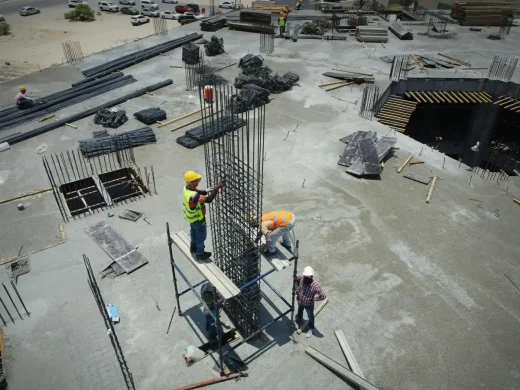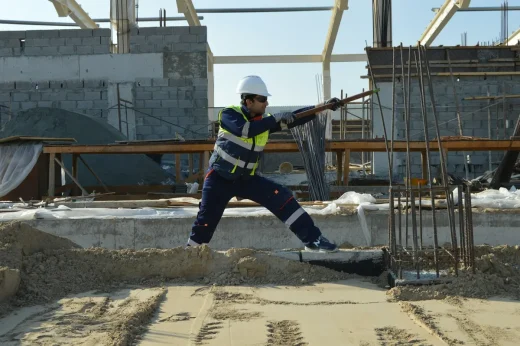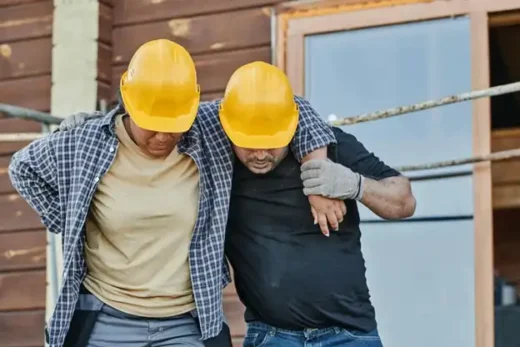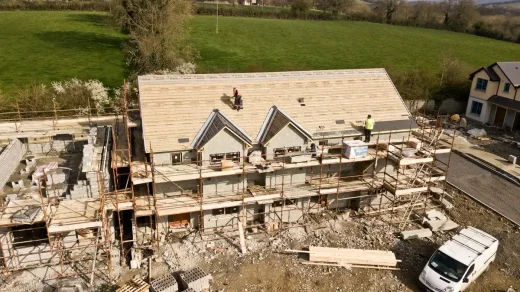Workplace injury for architects and site managers, Construction accidents tips, Building safety, H&S build hazards
9 Essential Steps After a Workplace Injury for Architects and Site Managers
16 June 2025
9 Key Steps After a Workplace Injury for Architects and Site Managers
Accidents at construction sites don’t send a warning first. One moment, everything runs to spec. The next, someone’s injured, and the whole day changes. Whether it’s a slip on loose rebar or a scaffolding collapse, architects and site managers need to respond quickly and methodically.
Here’s what needs to happen next.
1. Prioritize Immediate Medical Care
Before any paperwork or reporting, make sure the injured party receives proper care. On-site first aid is critical in the first few moments, but don’t stop there. Even minor-looking injuries can evolve into serious complications if ignored.
Make arrangements for transportation to a clinic or hospital if necessary.
2. Lock Down the Incident Area
Preserve the scene. That doesn’t mean halting the entire build; it means cordoning off the specific location where the incident occurred. Remove non-essential personnel and delay any cleanup until documentation is complete.
3. Notify Internal Teams and Stakeholders
Next, alert your internal health and safety officers and company leadership. For architectural firms, this might also include partners or clients if their designs intersect with site conditions. General contractors should inform project owners and subcontractor managers as needed. Open communication now prevents blame games later. Keep the tone factual, not speculative.
4. File an Official Incident Report
Every incident needs documentation. Gather statements from the injured person, eyewitnesses, and anyone responsible for site supervision. Note:
- Weather conditions
- Site layout
- Equipment in use
- Any visible safety violations or malfunctions
5. Understand Employer and Employee Obligations
For architects and site managers, understanding where your responsibility begins and ends is critical. Employees are typically covered under workers’ compensation, but that doesn’t erase a property owner’s liability or a designer’s role in risk mitigation. Clarify insurance coverage, and ensure injured workers understand their right to seek medical and legal assistance without retaliation.
At this stage, legal insight becomes strategic. Speaking with professionals like Zanes Law personal injury lawyers helps clarify whether an injury stems from oversight, equipment failure, or design flaws. The earlier the evaluation, the better.
6. Initiate an Internal Safety Review
Once the dust settles, look inward. How did the safety protocols hold up? Was this a fluke or a sign of a deeper issue? Update:
- Site walkthrough checklists
- Safety training content
- Communication protocols
- Equipment maintenance schedules and logs
Hazard signage placement and clarity
Incorporate feedback from on-site workers, not just leadership.
7. Communicate with Project Partners
Injury on-site affects trust. Don’t wait for others to ask questions. Share findings from the internal review with clients, investors, and regulatory bodies when appropriate.
Explain how the situation is being addressed, both to correct the immediate hazard and to prevent recurrence.
8. Consult Third-Party Experts Where Needed
Not every incident has a straightforward cause. If the injury involved faulty equipment, poor ground conditions, or unusual site configurations, bring in relevant experts:
- Structural engineers
- Ergonomic consultants
- Environmental specialists
- Occupational hygienists
9. Document and Share Lessons Learned
Create a case summary to archive internally. Share it with project teams during safety briefings or training modules. This should include the cause, the response, the results of internal audits, and changes implemented. Treat this not as a record of failure, but as a learning tool to strengthen future resilience.
On-Site Injury: Prepare Yourself Today
When someone gets hurt on-site, it tests not only your emergency response, but your long-term professionalism. For architects and site managers, reacting isn’t enough. The real responsibility lies in how you prepare, respond, and adjust for the future, without losing sight of the human impact.
Comments on this guide to Understanding your rights for construction accidents article are welcome.
Construction Safety
Building Construction Site Safety
How architecture adapts to evolving safety regulations

Building construction site safety awareness

Common construction site injuries
Construction industry health and safety importance
Why Construction Safety Is Important
Building Articles
Residential Architecture
Comments / photos for the Workplace injury for architects and site managers – construction accidents advice guide page welcome.







